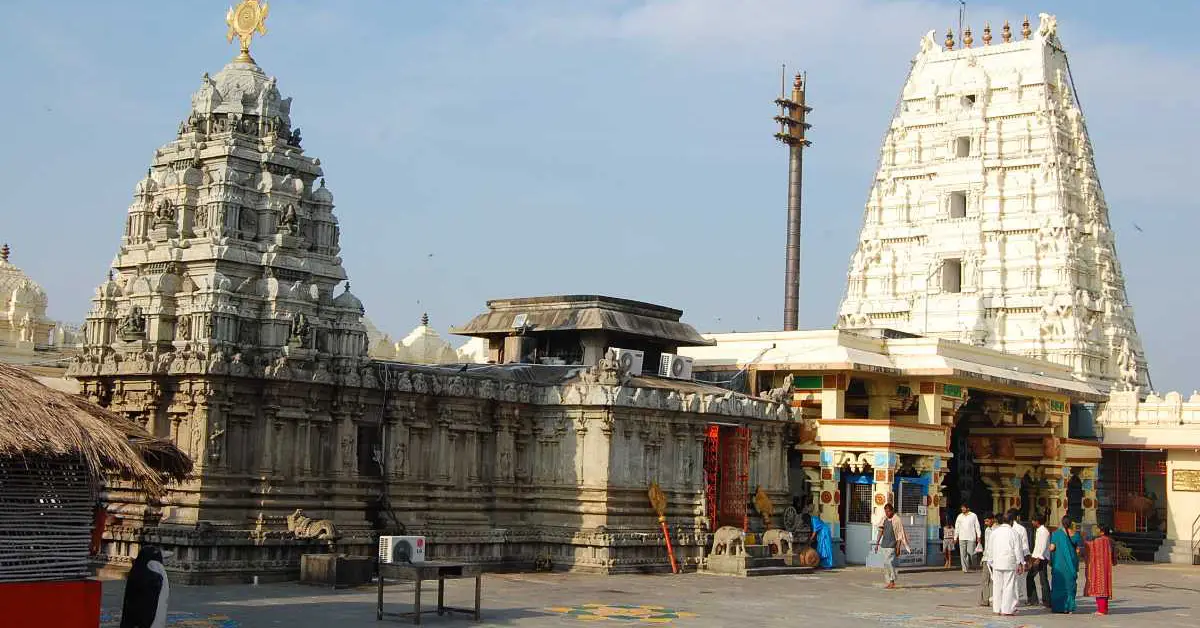The Srikalahasti Temple stands as a magnificent testament to architectural brilliance, spiritual significance, and historical richness in the heart of Chittoor district, Andhra Pradesh. Nestled at the base of the Tirumala Hills, this ancient temple is not just a place of worship but a profound symbol of cultural heritage and architectural marvel that has captivated devotees and historians alike for centuries.
Table of Contents
Historical Significance
The origins of Srikalahasti Temple trace back to an incredibly ancient period, with archaeological and scriptural evidence suggesting its existence dates to at least the 5th century CE. The temple is dedicated to Lord Shiva and is renowned as one of the Pancha Bhoota Sthalams – a group of five temples representing the five primary elements of nature: earth, water, fire, air, and space. Specifically, Srikalahasti represents the “Vayu Sthalam” or the Air Element Temple.
The architectural splendor of the temple reflects the Dravidian style of temple construction, with intricate carvings, towering gopurams (temple towers), and sculptural details that showcase the exceptional craftsmanship of ancient artisans. The main temple complex is believed to have been significantly expanded during the Chola and Vijayanagara periods, with subsequent renovations and additions made by various ruling dynasties.
Architectural Marvel
The temple’s most striking feature is its magnificent rajagopuram (main tower), which rises to an impressive height of approximately 120 feet. This architectural masterpiece is adorned with intricate sculptures depicting various mythological scenes, divine figures, and complex geometric patterns that reflect the immense artistic skills of the sculptors of that era.
The temple’s layout follows traditional Dravidian temple architecture, with multiple prakarams (concentric walls), mandapams (halls), and shrines dedicated to various deities. The main sanctum sanctorum houses a naturally formed Shiva Lingam, which is considered extremely sacred by devotees.
Spiritual Significance
Srikalahasti is particularly famous for its unique association with planetary influences and spiritual healing. According to Hindu mythology, the temple is closely linked to Rahu and Ketu – two significant celestial entities in Vedic astrology. Devotees believe that performing specific rituals here can mitigate negative planetary effects and bring spiritual relief.
The temple is also deeply associated with a compelling legend about devotion. According to the mythology, a spider (Sri), a snake (Kala), and an elephant (Hasti) worshipped the Shiva Lingam with utmost devotion. Their unwavering dedication is said to have pleased Lord Shiva, who ultimately granted them moksha (spiritual liberation). This story is the origin of the temple’s name – Srikalahasti.
Architectural and Artistic Highlights
The temple complex houses several remarkable features:
- Main Shrine: The Shiva Lingam is naturally formed and is considered one of the most powerful Swayambhu (self-manifested) Lingams in India.
- Sculptural Brilliance: The temple walls are adorned with intricate sculptures depicting various mythological narratives, showcasing exceptional craftsmanship.
- Musical Pillars: Like many ancient South Indian temples, Srikalahasti features pillars that produce musical notes when gently struck – a testament to the advanced architectural and acoustic knowledge of ancient Indian craftsmen.
Rituals and Festivals
Throughout the year, the temple hosts numerous festivals that attract thousands of devotees. The most significant celebrations include:
- Mahashivaratri, which sees massive congregations of devotees
- Brahmotsavam, a grand nine-day festival celebrating divine manifestations
- Monthly special rituals during auspicious star configurations
Practical Information for Visitors
Temple Timings
- Morning Session: 5:00 AM – 12:30 PM
- Evening Session: 4:00 PM – 9:00 PM
Important Considerations
- Dress modestly and adhere to traditional temple dress codes
- Photography is restricted inside the main sanctum
- Special darshan and VIP entry tickets are available
- Free annadanam (food distribution) is conducted at specific times
Spiritual and Cultural Importance
Beyond its architectural magnificence, Srikalahasti Temple represents a living cultural tradition. It is not merely a monument but a continuously active center of spiritual practice, where ancient rituals are performed with the same devotion they were centuries ago.
The temple attracts pilgrims from across India, transcending regional and linguistic boundaries. It stands as a powerful symbol of India’s rich spiritual heritage, demonstrating how architectural brilliance can be seamlessly integrated with profound spiritual experiences.
Getting There
Located approximately 36 kilometers from Tirupati and well-connected by road and rail, Srikalahasti is easily accessible. The nearest major airport is Tirupati International Airport, making it convenient for both domestic and international travelers to visit this spiritual landmark.
Conclusion
Srikalahasti Temple is more than a religious site – it’s a living museum of architectural excellence, spiritual depth, and cultural continuity. It invites visitors to experience a profound connection with ancient traditions, artistic brilliance, and spiritual energy that has remained unchanged for centuries.
Whether you’re a spiritual seeker, history enthusiast, or architectural admirer, Srikalahasti offers a transformative experience that resonates deeply with the timeless spirit of Indian cultural heritage.




